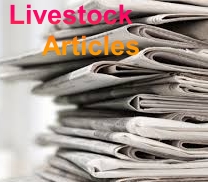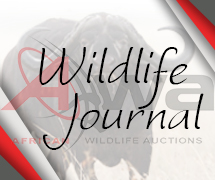Braunvieh SA
Braunvieh are dual-purpose cattle, first imported to South Africa in 1907 as part of a cross-breeding programme initiated by the Department of Agriculture to improve the indigenous breeds and produce cattle suited for the cold highlands in South Africa.
In those years, the breed, thanks to its exceptional qualities, distinguished itself by resulting in a marked improvement of all the breeds with which it was crossed, resulting in accelerated growth, good muscling and excellent conformity in offspring.
Eighteen years later, the South African Braunvieh Cattle Breeders’ Society, Braunvieh SA for short, was founded to protect and promote the interests of Braunvieh producers in the country.
Since then the Braunvieh has become the breed that, over a thirty-year period, has won South-Africa phase C performance testing the most times – a standardised test where bulls from different breeds are evaluated and subjected to various body measurements under the same conditions over a predetermined period, to determine factors such as their average daily gain and feed conversion ratio.
Bulls that do not meet the minimum performance standards in phase C performance testing are castrated and Braunvieh SA only allows top bulls with above average scores to be branded with their mark and be registered with SA Studbook.
Braunvieh cattle have also established themselves as a breed with high best linear unbiased prediction values, which means that the performance of an animal’s offspring can be predicted.
Braunvieh SA Origin
The Braunvieh is one of the oldest pure breeds internationally, with records dating as far back as 800 BC. The breed originated in the Alps of Switzerland, from where it was exported to other countries since about 1897.
Performance testing of these animals is nothing new, as they have been subjected to these tests for over 850 years, according to Braunvieh SA. Documentation also exists that Muri Monks from the order of Saint Benedict near Basle in Switzerland, have been using ive breeding and keeping record of these animals since 1150 AC.
Their goal was to produce a well-balanced, fast-growing, early mature animal with a deep and long body, well developed muscling and not too much fat. The cattle were scored out of a hundred on these qualities, with those that scored less than eighty out of a hundred being excluded from future breeding programmes.
According to Braunvieh SA, its origin in the Alps has led to it having a higher red blood count than other breeds, allowing it to easily adapt to a variety of circumstances from extreme cold to extreme heat. It is also remarkable as it is one of the few cattle that can be milked and still produce calves that fetch good prices at the auction ring.
Services of Braunvieh SA
Braunvieh SA aims to promote and protect the interests of Braunvieh breeders in South Africa.
To this end, Braunvieh SA compiles and maintains a minimum breed standard based on fertility, production testing records and the visual appraisal for genetic defects and conformation to functional efficiency. All production data is made available to the council, inspectors and sub-committees.
The association compiles, keeps and maintains accurate records of Braunvieh pedigrees and particulars of all animals registered through the Society by the Association in the Herd Book. This is done, firstly to maintain the purity of the breed and secondly, to promote and encourage the breeding as well as genetic improvement of the production potential of the breed based on sound ion criteria.
Braunvieh SA actively promotes and encourages breeders to participate in shows, such as the Bloemfontein Show, the Royal Show in Pietermaritzburg, Nampo at Bothaville, the Agriculture Research Centre’s National Beef Awards, the Veeplaas/Alfa Show in Parys, the Standerton Show and the Braunvieh SA National sale, annually hosted in Kimberley.
The Society promotes and supports sales of Braunvieh stud cattle. Information and sales results are communicated via various communication channels, including the internet, newsletters, farmers’ days and the Braunvieh SA annual general meeting.
Membership of Braunvieh SA
Braunvieh SA has various membership categories, differentiated by age, members’ contribution to the breed and whether or not applicants actively breed Braunvieh.
An application fee is charged, whereafter members have to pay an annual subscription fee and are charged for herd assessments based on the number of their cattle that participate in the programme. Members undertake to abide by the stipulations, order and regulations of the society’s constitution when they join the society.
As with all the cattle breeders’ societies, Braunvieh SA has clear guidelines in terms of record-keeping and the way in which animals should be marked and identified. Records have to be kept of all registered animals, and all animals must participate in performance testing and physical evaluations to determine whether they will be accepted for registration or not.
The first ion for cows takes place during weaning when, for example, heifers with birth defects, genetic abnormalities, that are too small or too large, look unfeminine and have underdeveloped reproductive organs, have a poor or wild temperament and or functional faults, in terms of their built and legs, should be culled. Those from cows with a record of reproduction and birth problems will also not make the grade for stud production.
The second ion of heifers ordinarily takes place just before they are serviced at 15 to 24 months of age. At this stage, the animals are again evaluated for physical defects as well as post-weaning growth.
The third ion, fourth and final ion takes place during pregnancy evaluations, calving and weaning, with cows that did not take, failed or struggled to calve and those that failed to raise a calve or acquired a poor weaning index, being excluded from the stud. This is unless the failure can be justified by natural causes.
Braunvieh Cattle
The Braunvieh is a brown coloured medium to large sized cattle breed.
The Braunvieh, named after the brown colour of its coats, is one of the oldest and purest cattle breeds and part of beef production in South Africa, with records dating as far back as 800 BC. The breed originated in the Alps of Switzerland, from where it was exported since 1897 to most of Europe and Russia.
The breed was strategically enhanced when Muri monks in the 1150 AC ed breeding according to physical structure, balance, masculinity, beef and milk production. The main purpose of breeding cattle was to provide enough income for a small farm. Cattle that scored less than 80 out of 100 were rejected, as acknowledged by the Braunvieh Cattle Breeders Society of South Africa.
The Braunvieh has since had a dramatic impact on local cattle breeds globally, particularly due to quick growth, good muscle rations and build. Today, there are over 7 million registered Braunvieh cattle in 42 studbooks in more than 60 countries.
Breeding Society in SA
The first Braunvieh bulls were imported to South Africa in 1907, as part of a crossbreeding program of the Department of Agriculture, which aimed at breeding cattle suited for the cold highlands of South Africa.
The Braunvieh Breeding Society was founded in 1925, but a split occurred in 1974 when breeders who primarily focussed on the dairy characteristics and those who focussed on dual characteristics consisting of both meat and milk, decided to go their separate ways. The dual purpose Braunvieh association gained formal recognition as a separate association in 1996.
Attributes
The Braunvieh is a medium to large framed dual-purpose breed, which has been developed for meat and dairy products in a 60:40 ratio. The breed has a dark pigment and a well-adjusted hide. They lose hair in summer and their hide thickens in winter to ensure its body temperature stays as constant as possible. The dark pigment also helps to prevent eye cancer.
With their strong legs and black hooves, the cattle have the ability to walk far, so are able to thrive in extensive production conditions. Their calm temperament makes them easy to manage on the farm and in feedlots.
The cows have excellent maternal traits. They are highly fertile with long productive lifespans, producing superior milk that ensures calves grow up fast with above-average weaned weight.
Production Regions
Braunvieh cows have excellent udders and produce lots of milk.
The Braunvieh breed is produced all over South Africa. Its origin in the Alps has led to it having a higher red blood count than other cattle breeds, allowing it to easily adapt to a variety of circumstances from extreme cold to extreme heat.
Use
While Braunvieh cattle can be used on their own in closed herds, they also produce excellent results when used in crossbreeding programmes. The breed has an immediate positive impact on any type of commercial cattle breeds when used for cross-breeding. This results in the first crossbreeds having more milk, good udders, teats, an improved building structure and constitution with weaners having a higher body weight than the norm.
The Braunvieh is said to make any cattle breed more tranquil, increase the growth tempo and put money back in the farmer’s pocket at weaning age. This investment benefit can be seen in the Braunvieh cross calves which reach a weaned weight at the age of between 4 to 6 months.
Meat Quality
The Braunvieh breed is in high demand in feedlots due to their quick growth and docile temperaments.
By Glenneis Kriel








